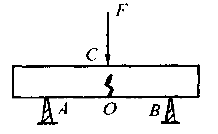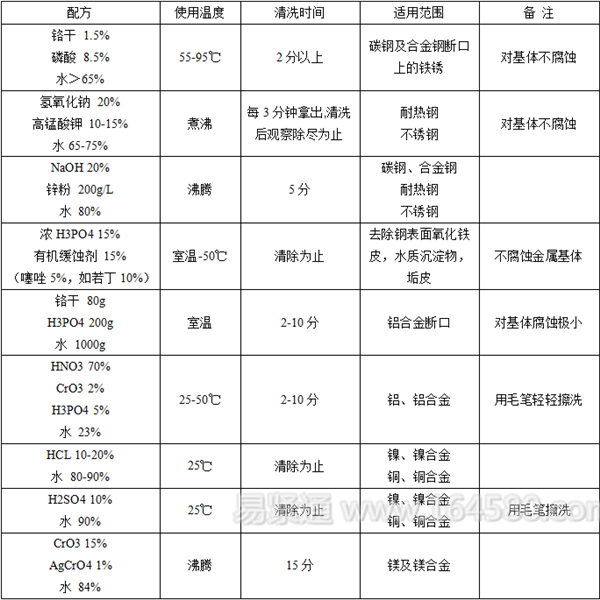- First, the interception of the fracture sampleIn order to perform a fracture analysis of a part, it is necessary to take a sample from a part that has not been completely broken. The fracture and crack source must not be damaged during the interception process. Before opening the crack, take a picture of the broken part of the part. The photo should include a full view of the part and a macro detail. The photo taken is required to have a clear theme, clear outline, strong stereoscopic effect, and no unnecessary shadows.After analyzing and judging the location of the crack source and the direction of crack propagation, the crack is generally opened along the crack propagation direction to form a fracture. If it is known that the part is cracked, the same type of stress can be used to open the crack. It is not clear that the stress causing the crack can be opened by three-point bending, as shown in Figure 2-10. When opened, the source of the crack is on the side of the two fulcrums, and the fulcrum is on the other side.
 Figure 2-10 Schematic diagram of three-point bending samplingA·B: support point                                          C: force point                                          O : crack sourceIf the crack source or crack propagation direction cannot be determined in the macroscopic shape, it is usually planed or turned behind the broken part, and the depth of the infeed can be accurately detected to find the crack leading edge.When cutting a fracture from a larger part, the cut and the fracture should be kept at a certain distance to prevent the heat from being affected by the microstructure and fracture morphology of the fracture. The slit gap is small and the selected coolant should not contaminate or corrode the fracture.In the case of original fracture damage or corrosion impact analysis, it is best to open the secondary crack by impact at liquid chlorine temperature because the secondary crack is not corroded or slightly etched. The fine structure of the morphology is often preserved on the secondary crack for fracture analysis.
Figure 2-10 Schematic diagram of three-point bending samplingA·B: support point                                          C: force point                                          O : crack sourceIf the crack source or crack propagation direction cannot be determined in the macroscopic shape, it is usually planed or turned behind the broken part, and the depth of the infeed can be accurately detected to find the crack leading edge.When cutting a fracture from a larger part, the cut and the fracture should be kept at a certain distance to prevent the heat from being affected by the microstructure and fracture morphology of the fracture. The slit gap is small and the selected coolant should not contaminate or corrode the fracture.In the case of original fracture damage or corrosion impact analysis, it is best to open the secondary crack by impact at liquid chlorine temperature because the secondary crack is not corroded or slightly etched. The fine structure of the morphology is often preserved on the secondary crack for fracture analysis.Second, the cleaning of the fracture.
If the fracture is contaminated, damaged, or corroded for various reasons, it will cause difficulty in the analysis. Therefore, the fracture must be cleaned. Fractures with different contamination conditions are cleaned using different methods.(1) The oil-contaminated fracture is first washed with gasoline to greasy, and then the fracture is placed in a glass dish containing an organic solution such as acetone, petroleum ether or chloroform, and the glass dish is placed in an ultrasonic oscillator for ultrasonic cleaning. . If there is no ultrasonic cleaner, use a soft brush to clean the organic solvent.(2) For fractures with relatively long rust exposure in humid air, the oxide film can be observed after removing the oxide film. It can be washed first with organic solution, ultrasonic or replica. If the effect is not good, it should be cleaned by chemical method, see Table 2-1. If the rust layer on the fracture surface is thick and cannot be removed with a chemical solution, the rust removal by electrolytic method is shown in Table 2-2.
Table 2-1 Common Fracture Chemical Cleaning Fluid
 Table 2-2 Electrolyte for cleaning the fracture surface
Table 2-2 Electrolyte for cleaning the fracture surface
The chemically cleaned fracture should be immediately washed in a dilute Na2CO3 or NaHCO3 solution, then rinsed with distilled water, alcohol, and dried.
(3) In the case of a fracture that occurs in a corrosive environment, the corrosion product composition and structure are generally analyzed by x-ray, electron probe or energy spectrometer, and then the fracture is observed and analyzed. Because these corrosion products are advantageous for analyzing the cause of the fracture.Regardless of whether the chemical or electrochemical cleaning fractures damage the fracture morphology more or less, it is generally only used last.In the accident fracture analysis, there is no rush to remove the surface covering, and the covering must be carefully analyzed to confirm that the analysis is worthless and then cleaned.Third, the preservation of the fracture
After getting the break, the best city to observe, if it is too late to observe because of time and restrictions, in order to keep the gap fresh, it is necessary to properly preserve the fracture. Different methods can be adopted in different situations.1. Fresh fractures in the atmosphere should be placed in the desiccator immediately or placed in other dry, dust-free places to avoid moisture oxidation2. Do not use to touch the fracture surface or match the butt joint to avoid artificial damage.3. In order to prevent rust or corrosion of the fracture, a protective material such as cellulose acetate ketone solution, epoxy citric acid or anti-rust paint may be applied to the surface, but the smear material may not corrode the fracture.4. The cleaned fracture should be immersed in an absolute alcohol solution or stored in a desiccator.5. Take protective measures from samples taken from large fractures. If it is coated with a cellulose acetate acetone solution on the fracture to be dried, it is cut into sections. When cutting with a hacksaw, avoid sawdust or other objects from falling on the fracture surface.6. If there is a small foreign object on the fracture, fix it to prevent loss of AC paper.
Aluminium Composite Panel (ACP) also known as aluminium composite material,( 1620377,ACM) is a type of flat panel that consists of two thin aluminium sheets bonded to a non-aluminium(polyethylene) core. ACPs are frequently used for external cladding or facades of buildings, insulation, and signage and building interior partitions and decorations.
It is made available in various color and finishes utilizing PE coating. PVDF coating, nano coating, fire proof, brushed, wood grain, mosaic and even marble coating.
Acp Cladding Sheet,Aluminium Composite Panel Roof,Matte Aluminum Composite Panel,High Gloss Aluminum Composite Panel
Shenyang Xiandai Jixiang Decorative Material Co., Ltd , https://www.modernbond-acp.com